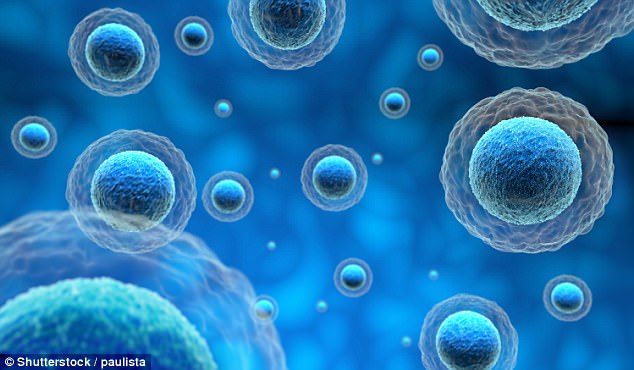
The report from Radboud University in the Netherlands revealed that 451 cell cultures used in thousands of experiments are contaminated.
Researchers are warning that these experiments could have led to authorities erroneously approving scores of ineffective treatments.
Some of the contaminated cells' origins date back to 1951, and they have been used in laboratories for upwards of six decades.
The report's researchers have said that contaminated cells are still used in research environments and are warning that the problem deserves the urgent attention of the medical community.
For the study researchers first identified contaminated cell lines, which are cell cultures that have the same genetic makeup.
They looked at data from the International Cell Line Authentication Committee (ICLAC) and accessed the committee's Register of Misidentified Cell Lines that provides a list of the 451 known contaminated cell lines.
Some of the contaminated cells the researchers looked at - which have been used in a number of studies - are known as HeLa cells and were named after the person they came from, Henrietta Lacks.
A sample of Lacks's cells was taken by a Johns Hopkins scientist in 1951 while she was battling cervical cancer. Scientists then discovered that human cells are immortal and can be grown in laboratories.
Lacks's cells were used to create a polio vaccine and were incorporated in in vitro fertilization research.
However, scientists did not know at the time that while HeLa cells continue to grow in a lab setting they also contaminate other cultures.
This means that other exposed cultures that did not consist of HeLa cells were contaminated with them.
WHAT ARE HELA CELLS?After looking at the different known misidentified cell lines on the ICLAC list the researchers used a database to determine how many scientific studies incorporated the cell lines.
HeLa cells, which are one of the main topics in the new report, have been controversial for years.
Their source of origin was Henrietta Lacks, a black farmer who lived in Virginia.
The cells that were contracted from her while she was dying were removed unbeknownst to her.
The use of her cells in multiple groundbreaking advances has raised questions about scientists' rights to use biological samples from individuals without their consent.
It highlighted the ethical debate about whether or not human cells are simply 'tools' scientists can use just like test tubes or chemicals.
Lacks's story also emphasizes the problem of black people in the US being exposed to experimental, medical treatments without their consent.
They found that an astonishing 32,755 publications have been written based on studies that involved misidentified cell lines.
The researchers said that these papers, now matter how old, still impact current research.
'Even if future misidentifications could be avoided completely - which is not likely given the track record of earlier attempts - these "contaminated" articles will therefore continue to affect research,' the study said.
The report was one of the first of its kind to look at how much scientific literature has been affected by the problem.
The study said: 'Our results seem to present worrying problems for the biomedical sciences. Although the issue of misidentified cell lines has long been known, its effect on the scientific literature has not been properly recognized, let alone properly treated.'
Researchers said that amendments need to be added to previously published papers that relied on results involving misidentified cell lines.
'Some form of precautionary labeling of contaminated articles seems unavoidable,' the study said.
But institutions should handle the matter delicately, the report warned.
'However, this remedial action should be proportionate and not cause unnecessary damage. For some individual scientists, research departments, or scientific journals, rash measures could turn out to be painful,' the report said.



Reader Comments
to our Newsletter